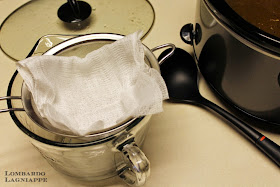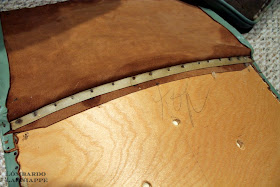For tonight I just have a recipe to share. But it's a good one! I found this recipe earlier this summer and have probably made it 3-4 times since. As the weather gets colder in a couple of months, I imagine that we'll be having it for dinner even more often. The other nice thing about it is that it makes enough for 3 meals for us. I just freeze two containers and it reheats great. This recipe is from a blog I've referenced before called Pinch of Yum and as with every other recipe from that site, this one is fairly simple and always turns out great! If you want to see her exact recipe as well as some beautiful food photography then definitely click on the link and check out her post.
I made very minor tweaks to this recipe based on things we had available at home. Also, if you're not lucky enough to live down south where you can get some real andouille sausage, then I recommend the Johnsonville version that you should be able to find at your regular grocery store. They make a couple of versions and they're both very tasty! Here is how I make it:
Crockpot Chicken and Sausage Creole
2 green peppers, diced
1 large white or yellow onion, diced
2-3 cloves of garlic, minced
1 lb Andouille or smoked sausage, sliced
1 lb boneless skinless chicken breast, whole, frozen
8 oz. can tomato sauce
15 oz can diced tomatoes (I use fire roasted tomatoes from Aldi and they give a really nice flavor)
3 T tomato paste
2 cups chicken stock
1 can black beans, drained and rinsed
Cajun Seasoning to taste (probably start with a couple teaspoons)
Rice for serving (I was thinking today that this would also be AMAZING served over cheese grits. Just sayin')
I usually start this dish the night before we're planning on having it for dinner so that there is less prep work in the morning. All I do the night before is chop the onions, peppers, garlic and sausage and put it all in a large container so it will be ready to dump in the crockpot in the morning.
 |
| All the "pre-chop" ingredients |
When you're ready to get the crockpot going, add the pre-chopped veggies and sausage, tomato sauce, diced tomatoes (including juice), tomato paste, chicken stock, cajun seasoning and black beans and stir to combine. Then add the frozen chicken breasts and kind of nestle them down in the liquid.
 |
| Everything else (minus the chicken broth and Cajun seasoning) |
 |
| Pre-cooking |
Put the lid on the crockpot and set on low for 8-10 hours. After the 8-10 hours of cooking, use a couple of forks to shred the chicken breasts right in the crockpot. Then you can either turn the crockpot off or set it on warm while you make some rice. Serve over rice and enjoy!
 |
| Post-cooking, but before shredding the chicken |
 |
| All done! |
Like I said, we really love this dish and I plan on making a few batches to add to my freezer "stash" before our little man arrives. If you wanted to stretch it a little farther you could add more liquid, another can of black beans, or more veggies. It's a pretty versatile recipe.
In other news, I got a wild hair this weekend and decided that the shower in our master bath needed to have the tile grout resealed and all the caulk removed and redone. (Is this what people mean when they talk about "nesting"? haha) So I sat and scrubbed on Sunday and started trying to cut out the old caulk tonight. After about 2 minutes of trying to remove the caulk, I started to second guess myself. Maybe this wasn't the best idea, but I'm too far in now and it has to be finished! I just hope that in the end I have a shower that looks nicer and stays clean a little longer. There will be no before and after on this project because well, it's just a shower. But if I'm away from the blog for a bit, you can at least guess why. I think that's it for tonight, thanks for reading!































